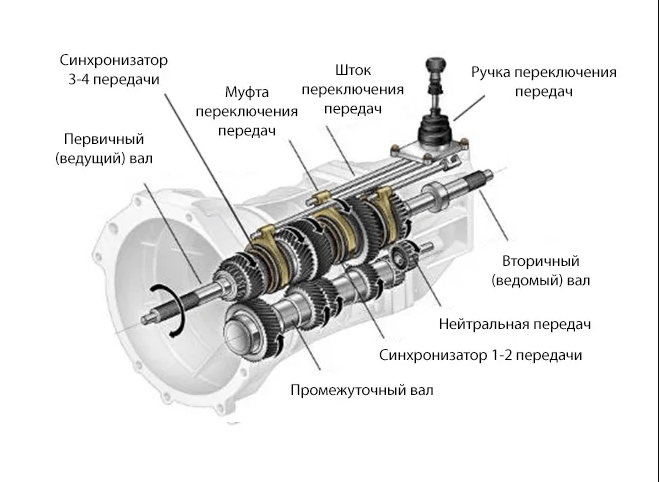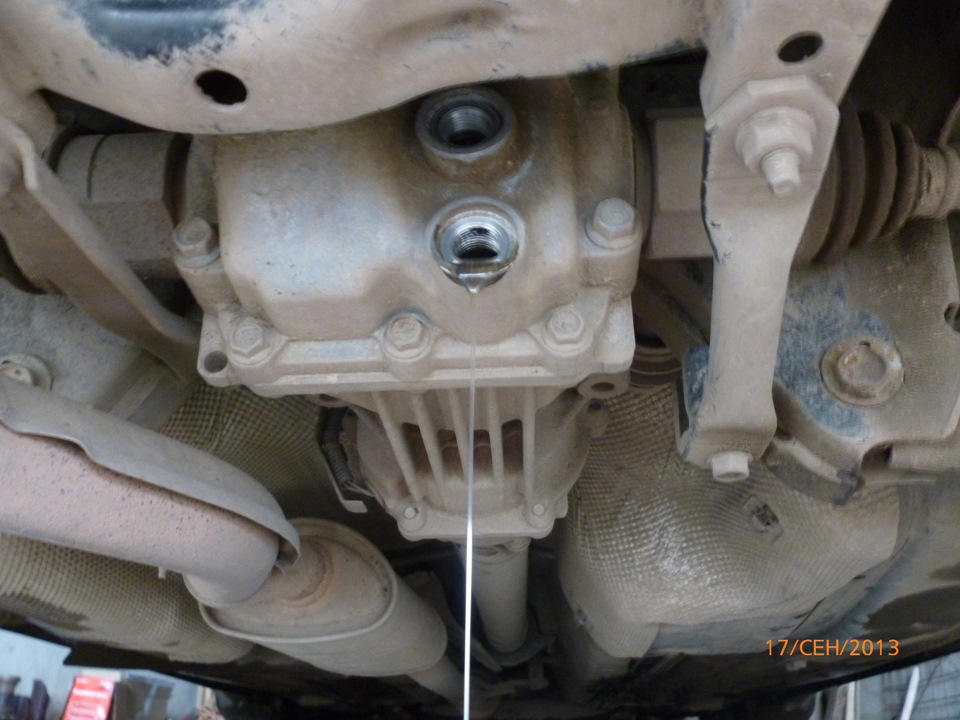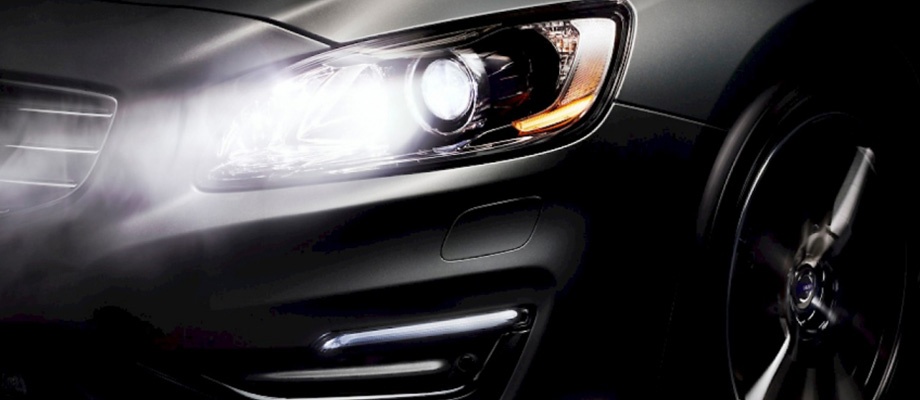
Headlights, lanterns, foglights - types of automotive lighting
Automotive lighting is a combination of a number of lighting and lighting devices. They are located both outside and inside the vehicle and have different purposes. Internal devices provide convenience and comfort through general interior lighting or local illumination of its individual parts, glove box, trunk, etc. If the interior lighting does not raise any special questions, then it is worth talking about external lighting fixtures in more detail.
In front of the machine there are devices for low and high beams, position lights and direction indicators. As a rule, these devices are structurally combined into one combined device, which is called a block headlight. In recent years, this set has also been supplemented by daytime running lights, which have become mandatory in most European countries since 2011.
The fog lamp (PTF) is often mounted as a separate device, but may be part of the block headlight. Fog lights are switched on simultaneously with the dipped beam or instead of it. Front PTFs are not mandatory devices, and in some countries they are completely prohibited.
Low beam provides visibility within about 50 ... 60 meters. Thanks to the special design of the headlights, the dipped beam is asymmetrical, meaning that the right side of the road and the shoulder are better illuminated. This prevents dazzling oncoming drivers.
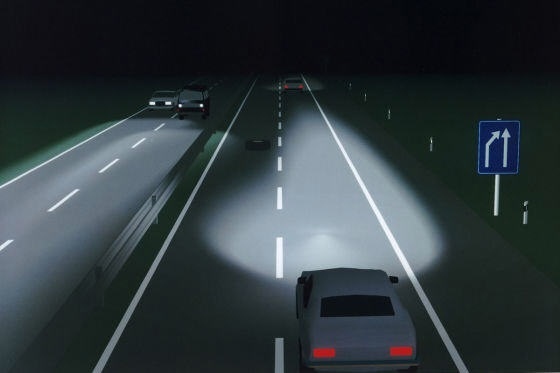
In Ukraine, the inclusion of low beams, regardless of the time of day, is mandatory when transporting dangerous goods or a group of children, towing and while traveling in a convoy.
The main beam is necessary for better illumination of the road at night, mainly on country roads. A powerful symmetrical light beam, propagating parallel to the roadway, is able to break through the darkness up to 100 ... 150 meters, and sometimes even further. The high beam can only be used when there is no oncoming traffic. When a car appears in an oncoming lane, you need to switch to low beam so as not to blind the driver. It should be borne in mind that the driver of a passing car can also be blinded through the rear-view mirror.
Marker lights allow you to indicate the dimensions of the vehicle.

They are usually switched on together with the backlight of the dashboard and are an important element in ensuring road safety in the dark. Front side lights are white, rear are red.
Turn signals inform other road users and pedestrians about your intentions - turn, change lanes, etc. Turn signals are also in the taillights, and repeaters are often installed on the sides. All of them work synchronously in flashing mode. The color of the pointers is yellow (orange).
Daytime running lights (DRL) improve the visibility of the vehicle during daylight hours. They emit white light, and place them under the headlights.
At first, DRLs were used in Scandinavia, where even in summer the light level is often insufficient. Now they have begun to be used in the rest of Europe, although there they are relevant mainly in the autumn-winter period. In Ukraine, they should be included outside populated areas from October to April inclusive. If there are no standard DRLs, you need to use low beams.
The main components of the headlight are a reflector (reflector) and a diffuser, as well as a light source (bulb), placed in a separate housing, which is usually made of plastic.
The reflector forms a light beam. It is also usually made of plastic, and the mirror surface is obtained using aluminum sputtering. In the simplest case, the reflector is a parabola, but in modern headlights, the shape is even more complex.
A transparent glass or plastic diffuser allows light to pass through and in some cases refract it. In addition, the diffuser protects the interior of the headlamp from environmental influences.
The asymmetry of the low beam can be achieved in two ways. In the design of the headlights of American-made cars, the light source is located. It turns out that the reflection from the reflector occurs mainly to the right and down.
In European cars, the light bulb is also offset from the focus of the reflector, but there is also a specially shaped screen that covers the bottom of the reflector.
Behind there are the following lighting devices:
stop signal;
marker light;
turn indicator;
reversing light;
fog lamp.
Typically, these devices make up a block headlight that is integral in design. It is mounted on the right and left symmetrically with respect to the longitudinal axis of the machine. It happens that the device is divided into two parts, one of which is built into the body, and the second - into the trunk lid.
In addition, there is an additional central brake light and number plate light at the back.
The red brake light comes on automatically on both sides when the brake is applied. Its purpose is quite obvious - to warn the driver of the car from behind about braking.
Side lights improve the visibility of the vehicle in the dark from behind and allow you to assess its size. The rear dimensions are red, but the intensity of their glow is lower than that of brake lights. It happens that one lamp with two filaments is used for the size and brake light.

The rear turn signals flash in sync with the front ones and are also yellow or orange.
The white reversing lights come on automatically when reverse gear is engaged. Improve visibility when reversing in the dark and warn other drivers and pedestrians of your maneuver.
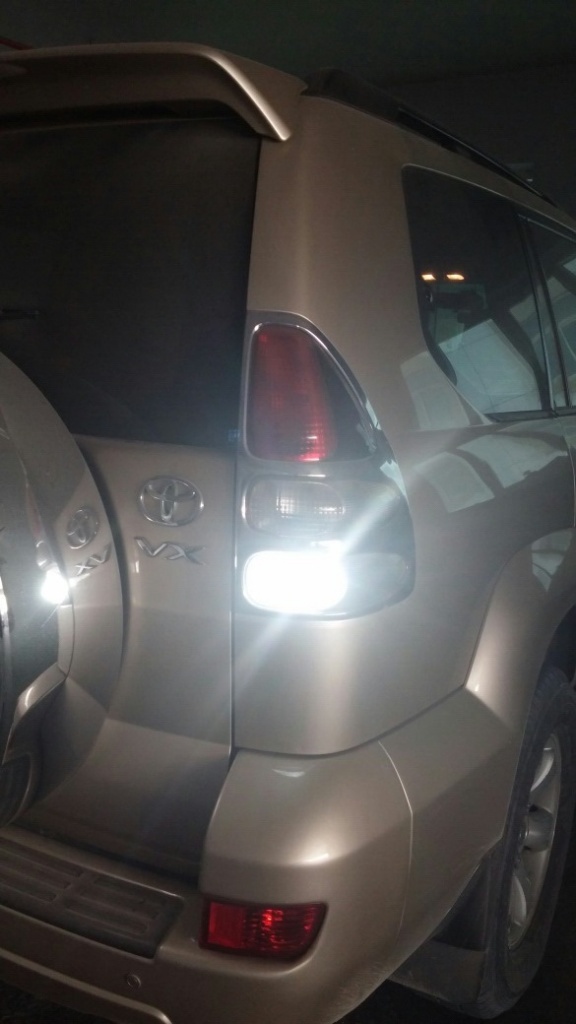
The rear fog lamp must be red. Its presence at the back is mandatory, unlike the front foglight. At night, in low visibility conditions (fog, snow), the rear PTF will make your car more visible to those who follow you. The rear fog lights can be made as separate headlights installed below the main headlights.
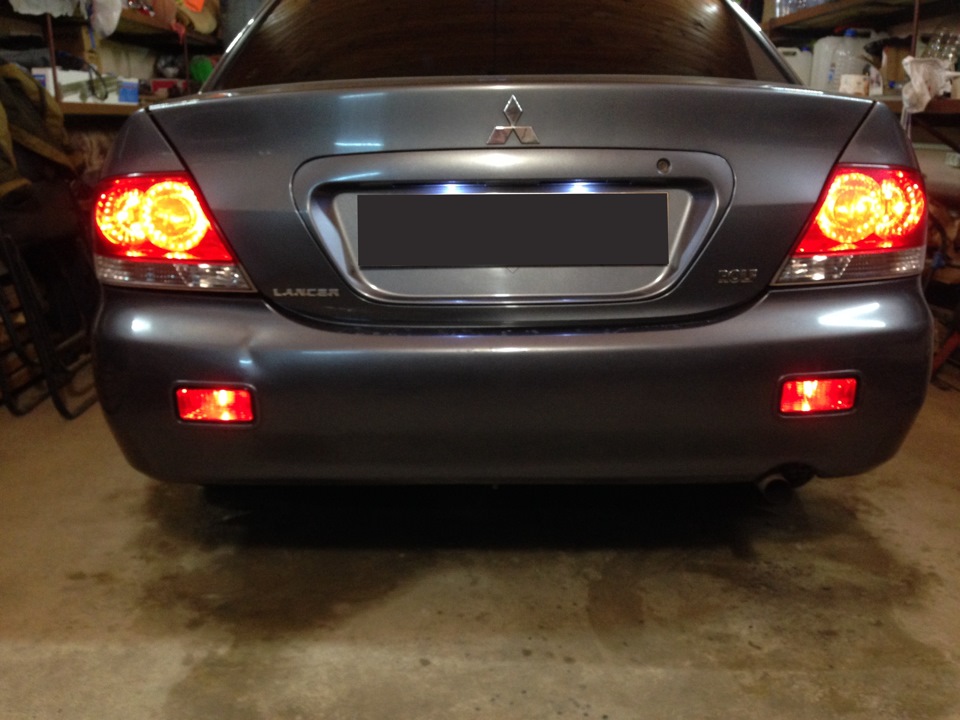
PTF at the back can be in the singular, in which case it is usually not located in the center, but closer to the driver's side.
The number plate lights turn on together with the side lights. Only a white lamp can be used for illumination. No arbitrary tuning is allowed here.
The additional central stoplight works synchronously with the main stoplights. It can be built into the spoiler, placed on the trunk lid or installed under the rear window. The eye-level positioning makes the brake light repeater visible even at short distances, such as in a traffic jam. The color is always red.
Fog, heavy dust, heavy rain or snowfall significantly impair visibility on the road and lead to the need to reduce speed. Turning on the high beam doesn't help. The light reflected from small drops of moisture creates a kind of veil that blinds the driver. As a result, visibility becomes almost zero. Slightly better in these conditions dipped beam.
In such a situation, the use of special fog lights may be a way out. Due to the special design of the fog lamp, the light beam emitted by it has a large horizontal dispersion angle - up to 60 ° and a narrow vertical one - about 5 °. Fog lights are usually located slightly below the dipped beam headlights, but at a height of at least 25 cm relative to the roadway. As a result, the light of the fog lamps is directed, as it were, under the fog and does not cause the effect of blinding by reflected light.
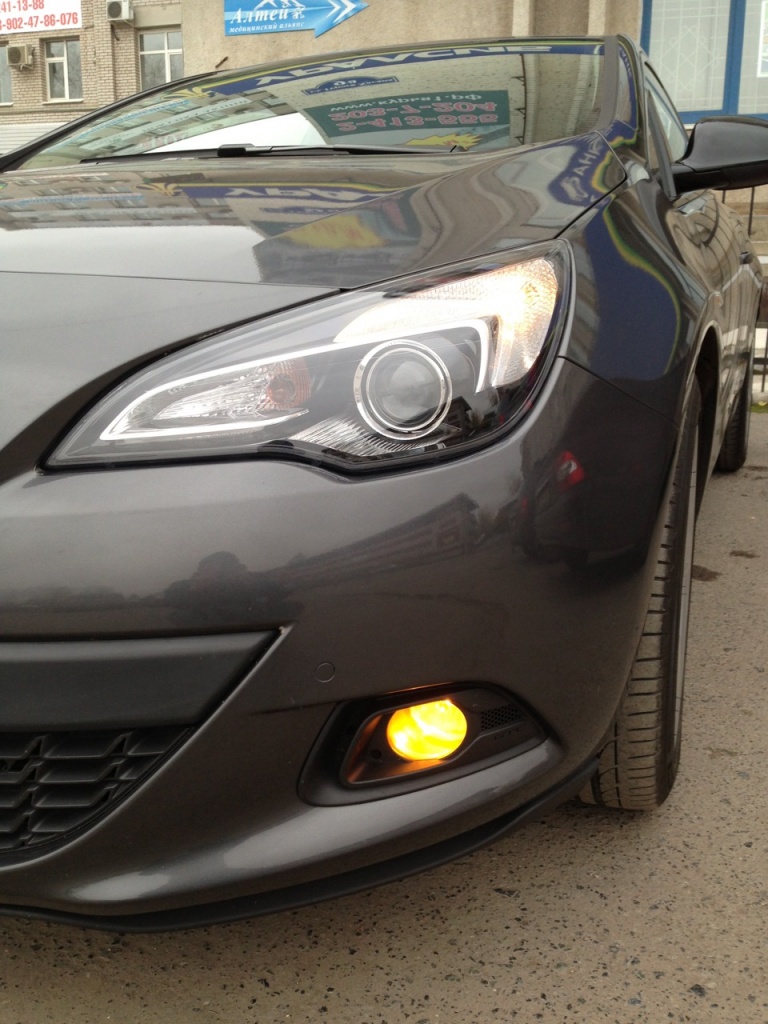
The color of the front fog lamps is usually white, although the use of the so-called selective yellow, which is obtained by filtering the blue, blue and violet components from white light, is allowed. Selected yellow does not give a noticeable improvement in visibility, but slightly reduces eye strain.
Although during daylight hours the front fog lamps do not provide a significant improvement in visibility, they can play the role of parking lights, improving the visibility of the car for oncoming traffic.
The rear fog light, as noted above, should shine in red. On a clear night, it cannot be turned on, as it can blind the driver of the car following behind.
There are four types of light bulbs that can be used as light sources in automobile headlights and other lighting fixtures:
— standard incandescent lamps;
— halogen;
— xenon;
- LED.
Conventional ones with tungsten filament are characterized by low efficiency and short service life, and therefore have long been out of use in automotive lighting devices. You can only find them in old cars.
are now standard and are installed on most production cars. Here, too, a tungsten filament is used, which is heated to a very high temperature (about 3000 ° C), due to which the luminous flux is much higher than that of incandescent lamps with the same power consumption.
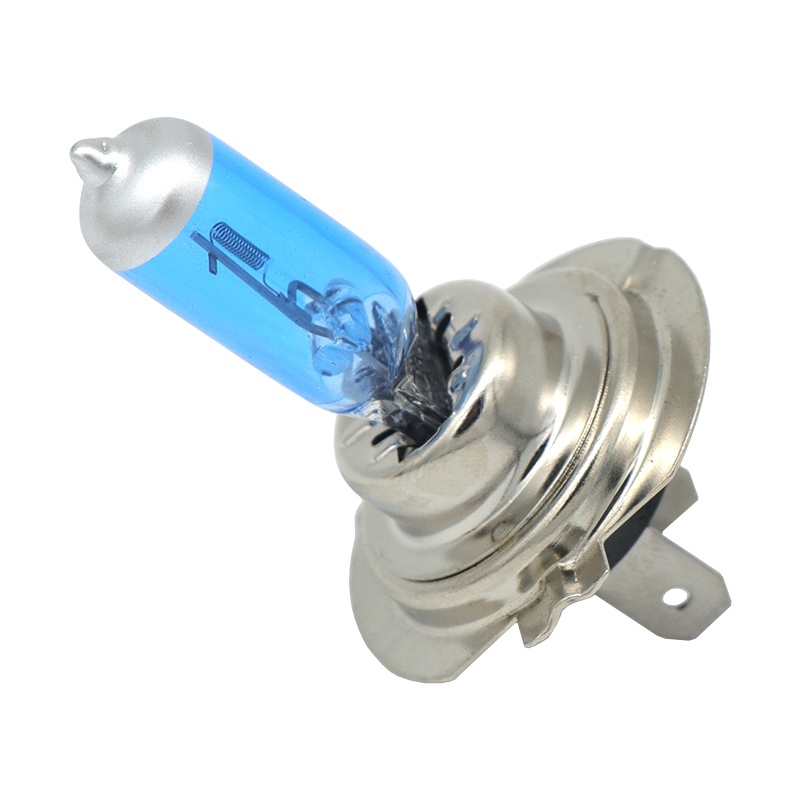
Halogens are the chemical elements of the 17th group of the periodic table, in particular fluorine, bromine and iodine, the vapors of which are pumped into the lamp bulb under pressure. The flask of a halogen bulb is made of heat-resistant quartz glass. The presence of a buffer gas slows down the evaporation of the tungsten atoms and thus prolongs the life of the lamp. Halogens last an average of about 2000 hours - about three times longer than conventional incandescent bulbs.
Gas discharge is the next step towards increasing the efficiency of automotive lighting technology. Xenon lamps are significantly brighter and more durable than halogen lamps. In a bulb filled with xenon gas, an electric arc is created between two electrodes, which serves as a light source. To ignite the arc, a pulse with a voltage of about 20 kV is applied to the third electrode. Receiving high voltage voltage requires a special ignition unit.

It should be borne in mind that xenon lamps cannot be installed in foglights, as the focusing of the headlight is disturbed, the geometry of the light beam changes and the cut-off line is blurred. As a result, the PTF does not provide visibility in difficult weather conditions, but it is capable of blinding drivers of oncoming and passing vehicles.
Read more about xenon lamps and the features of their use in the special.
Light emitting diode (LED) lamps are the near future of automotive lighting. Single ones that can be installed instead of halogens are available now. Until recently, LED-light bulbs were suitable mainly for interior lighting, room lighting and parking lights. However, now there are sufficiently powerful LED lamps that can be used for headlights.
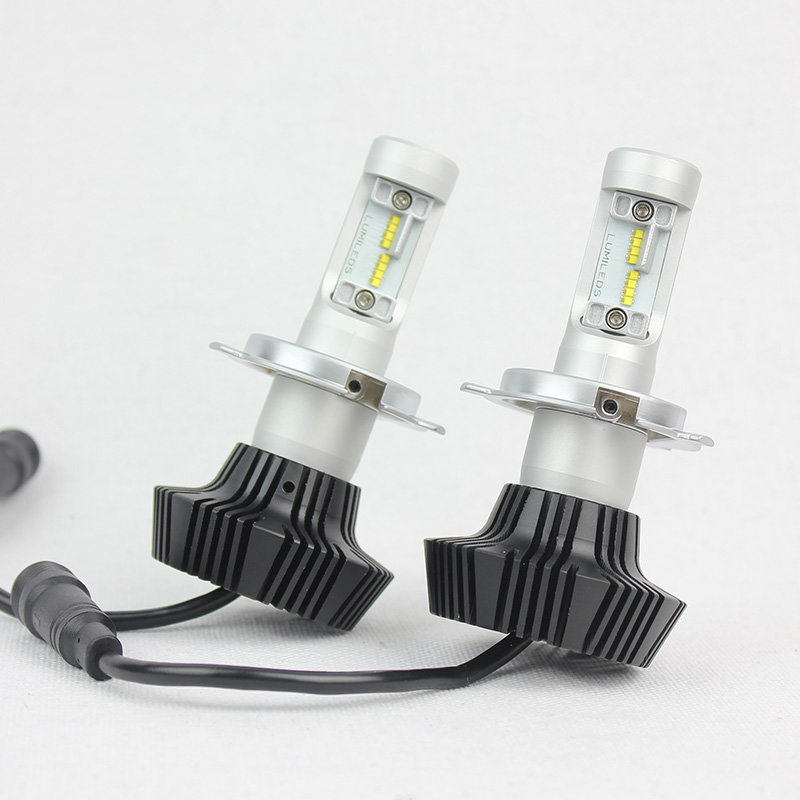
, originally designed for the use of LED, have not yet become a mass phenomenon, but not uncommon in middle-class cars, not to mention expensive models.
LED lamps have several advantages over halogen and xenon lamps:
- current consumption is 2 ... 3 times less;
— service life is 15…30 times higher;
— almost instantaneous inclusion, which is especially important for brake lights;
- slight heating;
— immunity to vibration;
— interchangeability with many halogen lamps;
- small size;
- environmental friendliness.
And the disadvantages of LED bulbs - the relative high cost, insufficient power for high beams and a blinding effect - are gradually becoming a thing of the past.
It would seem that nothing can prevent the complete and final dominance of LED-light bulbs in automotive lighting in the foreseeable future. However, there are already pilot developments using laser technology and organic light emitting diodes (OLED). What will happen next? Wait and see.
